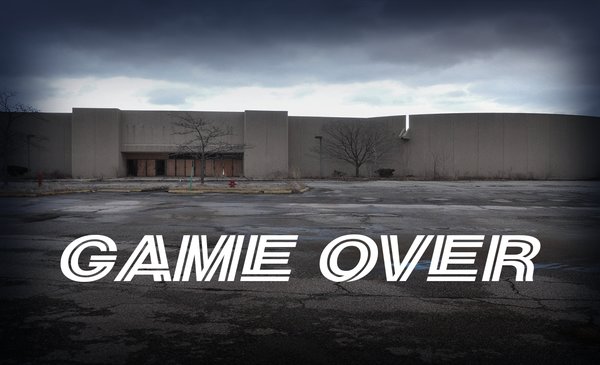
Don’t ever be satisfied with ‘business as usual.’ There are always others in the marketplace trying to create the next ‘killer application.’
They are smart, they are savvy, they have discovered new technologies, they have deep customer insight and they have an outsider’s perspective. Stay close to your customers. Understand their frustrations. Identify their latent needs. Keep abreast of market trends and new technologies. Constantly innovate. Test new features and new concepts. Relentlessly search for superior solutions to the customer needs that your products address today. Try to view your business from an industry outsider’s perspective. Try to put yourself in your customers’ shoes.
Following are ten sources of potential share loss for your products and brands:
1. SUBSTITUTE PRODUCTS – Products offering a similar consumer benefit but from a different product category
a. Examples:
i. Vacation rental homes in lieu of hotels or motels
ii. Contact lenses versus eye glasses, LASIK surgery versus contact lenses
iii. Aspirin versus Acetaminophen versus Ibuprofen versus Naproxen
iv. A plane versus a train versus a bus
2. BIG BOX RETAIL/CATEGORY KILLER STORES – A new retail format offers significantly more variety and selection (and often lower prices too) than your retail store does
a. Examples:
i. Barnes & Noble replacing smaller, local book stores
ii. Wal-Mart replacing smaller, local department or variety stores
iii. Home Depot or Lowe’s replacing smaller, local hardware stores
3. NEW TECHNOLOGY – A new product or technology meets the same needs as your brand’s products do (often in a superior way), even if it is not in the same industry
a. Examples:
i. Computers replacing typewriters
ii. UPS and FedEx replacing US Postal Service package delivery, E-mail replacing US Postal Service mail
iii. DVDs replacing videotapes, Netflix replacing video/DVD rental stores, on-demand movies replacing videos or DVDs
iv. Digital clocks replacing analog clocks
v. MP3 downloads replacing CDs
vi. Books on tape/CD versus printed books
vii. Digital versus traditional chemistry based photography
viii. Online brand asset management systems replacing brand identity guidelines/standards manuals
4. INTERNET SOLUTIONS – The Internet is often superior in offering maximum product variety, robust search and browse capabilities, 24/7 service and low prices. This can take share from brick and mortar retail store sales.
a. Examples:
i. Amazon.com versus Barnes & Noble big box book stores
ii. Online computer backup versus customer owned backup hard drives
iii. Online versus box office ticket sales
5. MEGA-TECHNOLOGY PLATFORMS – What used to address a single customer need now delivers an ever increasing number of features and applications previously delivered by other products
a. Examples:
i. Computers
ii. Cable televisions
iii. Mobile telephones
iv. MP3 players
6. VERTICAL INTEGRATION – A supplier or customer integrates upstream or downstream into your business
a. Examples:
i. Printers entering the publishing business
ii. Grocery stores opening their own organic farms
iii. Clothing manufacturers entering the fashion design business
7. TIMESHARING – Timesharing makes it much more cost effective for people to own a fraction of a product or to rent it when needed versus owning it outright
a. Examples:
i. Condominium timeshares
ii. Private aircraft fractional ownership and rentals
iii. Yacht fractional ownership and charters
iv. Cyber cafes
v. Art rental
8. SUPERIOR CONVENIENCE – Someone else is selling the same customer benefits that you are but in a way that is much more convenient for the customer
a. Examples:
i. Home delivery versus pick-up versus in-store shopping
ii. 24/7 access versus standard daytime and evening hours six days a week
iii. Pay via the Internet or telephone versus the mail
iv. Free rental car while your car is being serviced; better yet, the service shop swaps the cars at your house or place of work
9. VALUE-ADDED ENVIRONMENTS – Sometimes a new product purchase or usage environment based upon deep customer insight can provide a preferred customer experience at a price premium
a. Examples:
i. Starbucks – coffee is now $3-4 a cup because you get to drink it in an environment that provides a pampering experience
ii. Build-A-Bear Workshop – pay more to build your own teddy bear from scratch. It is a fun experience.
10. SERVICE ON STEROIDS – Someone else is doing what you are doing, only with superior customer service
a. Examples:
i. Grocery stores with in-store dining or freshly made ready-to-eat gourmet meals (such as Wegmans)
ii. Dry cleaners that pick up and deliver
iii. New home developments that include concierge services, country club memberships and on-site daycare
I wish you great success in anticipating and addressing the potential sources of brand share erosion. Stay ahead of the competition — constantly innovate ways to gain share instead of losing it.
The Blake Project Can Help You Grow: The Brand Growth Strategy Workshop
Branding Strategy Insider is a service of The Blake Project: A strategic brand consultancy specializing in Brand Research, Brand Strategy, Brand Growth and Brand Education




